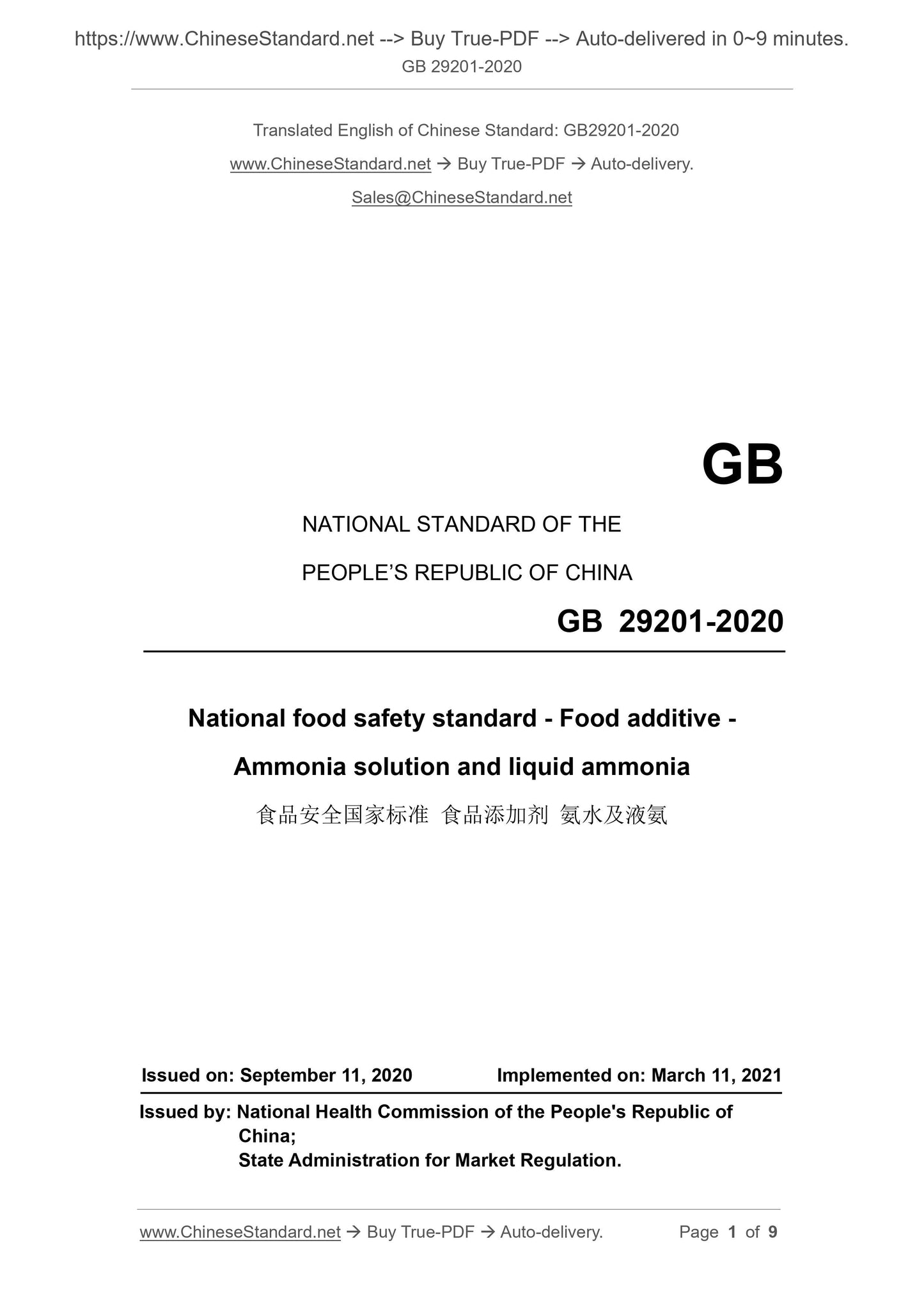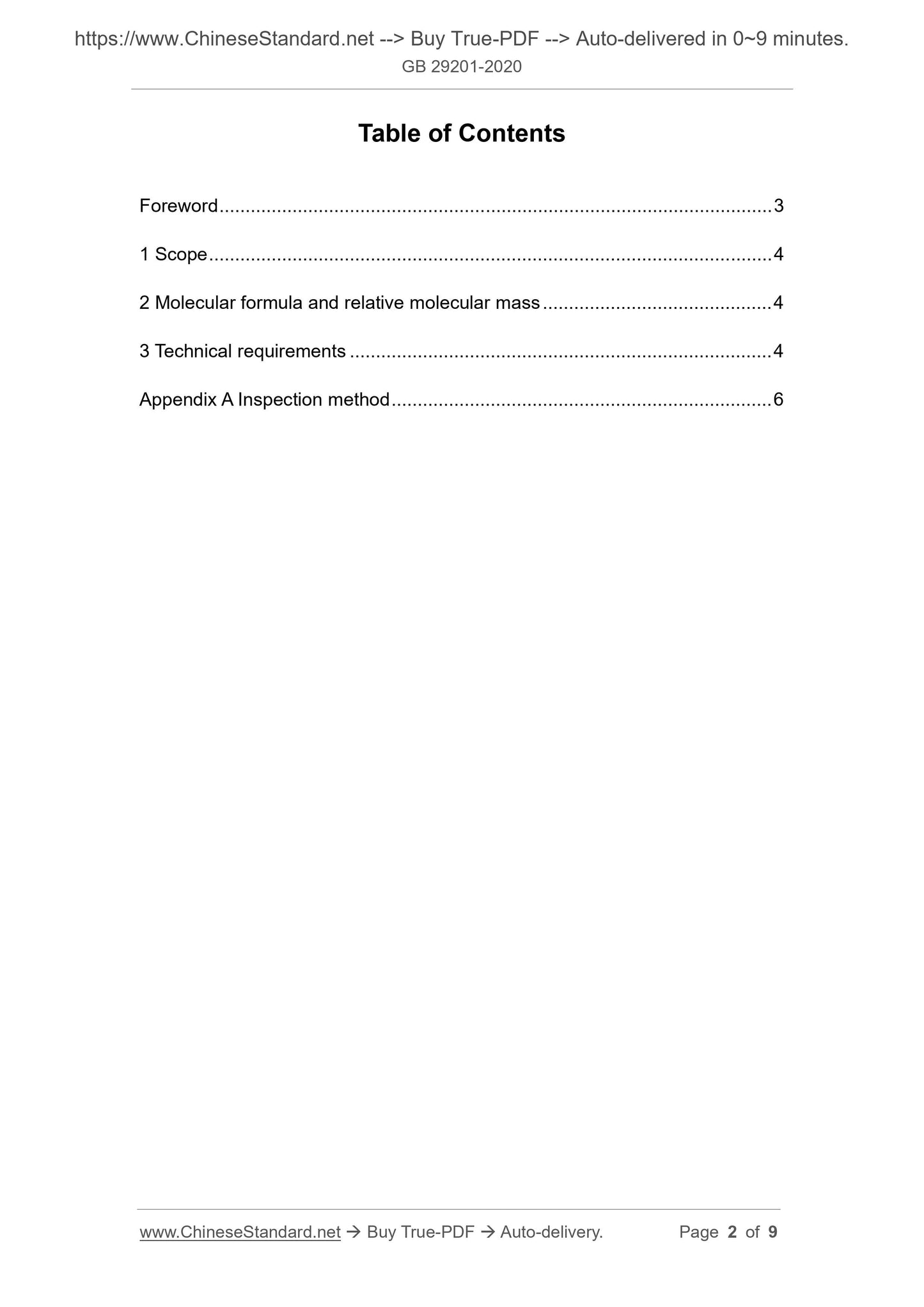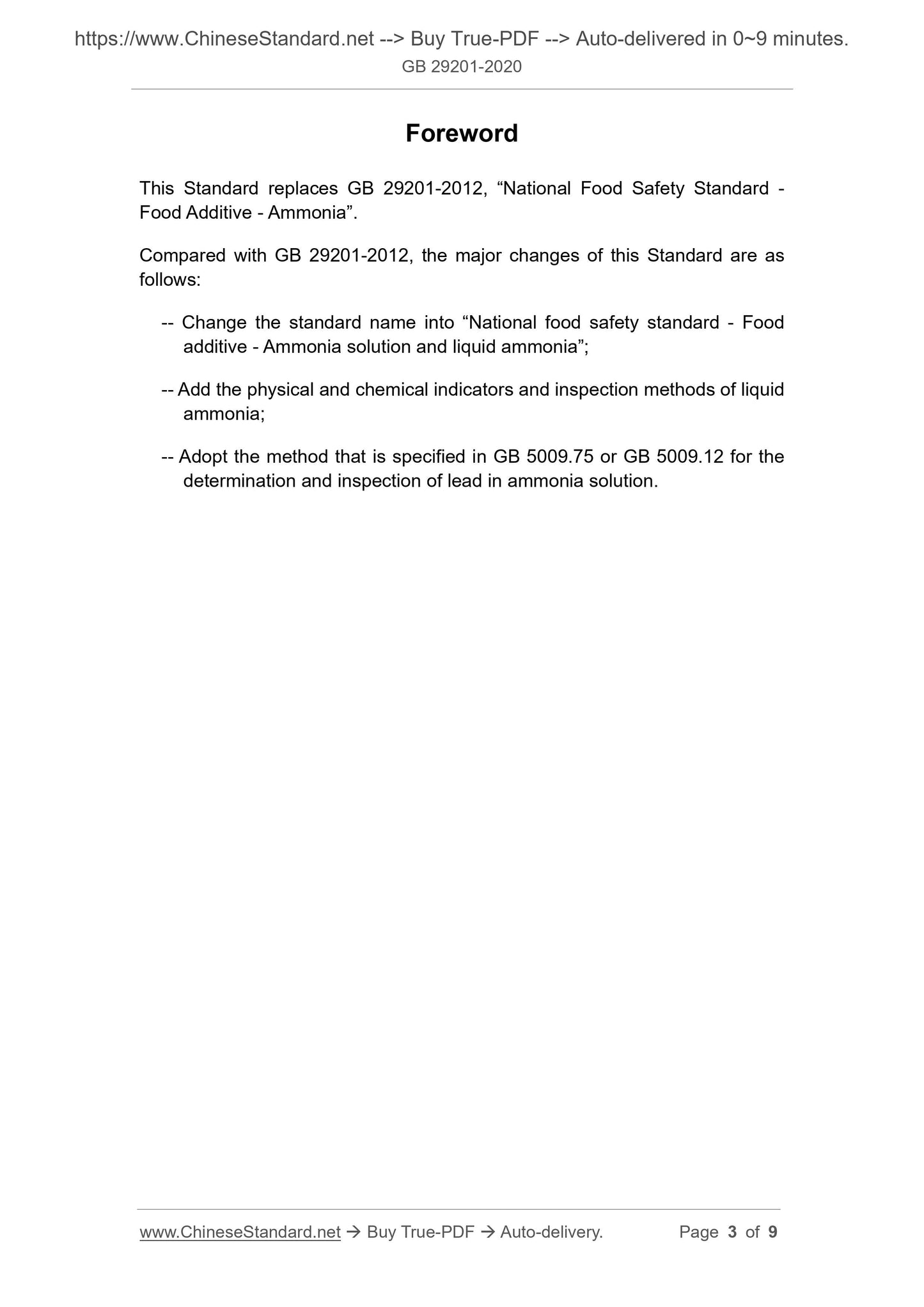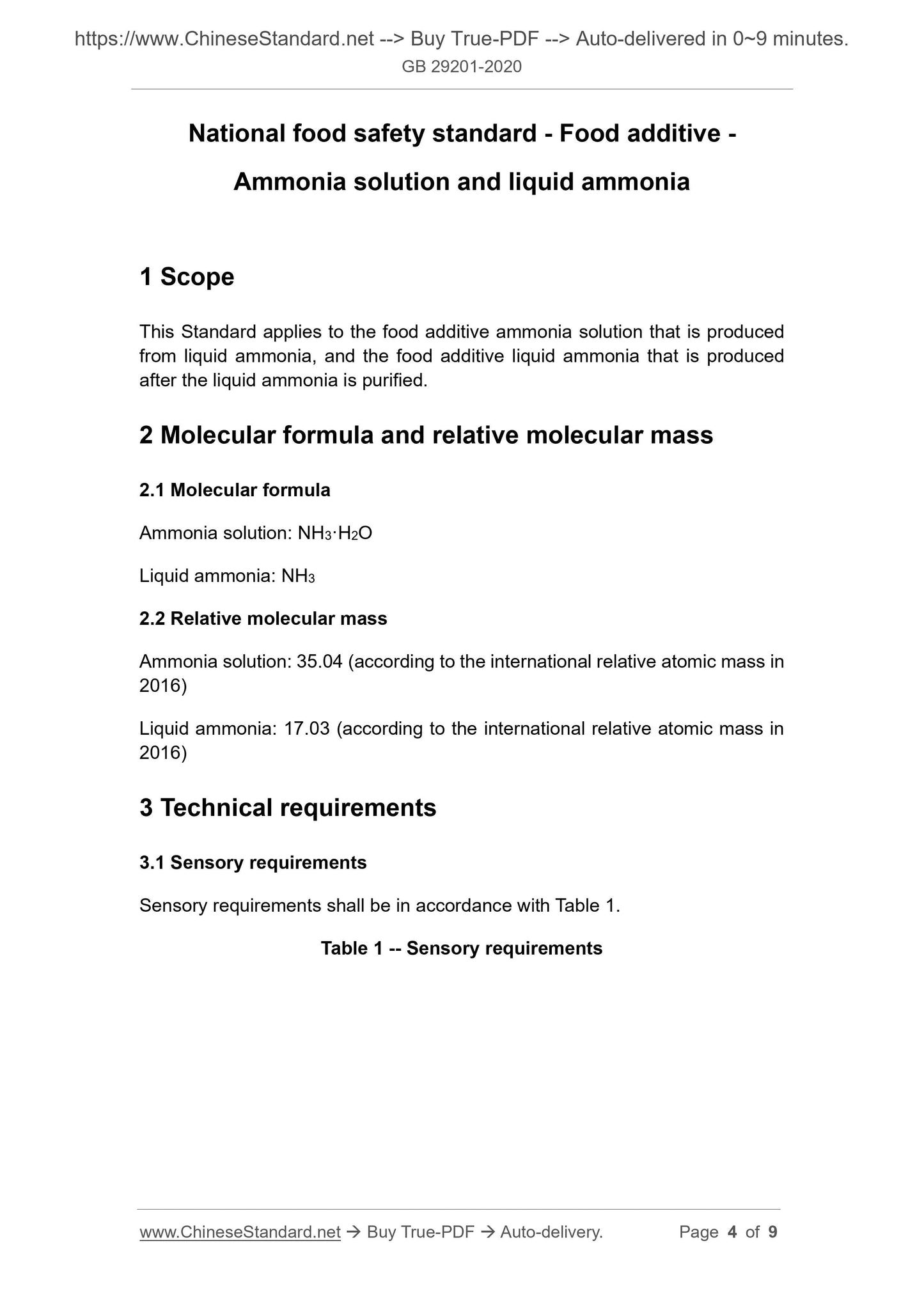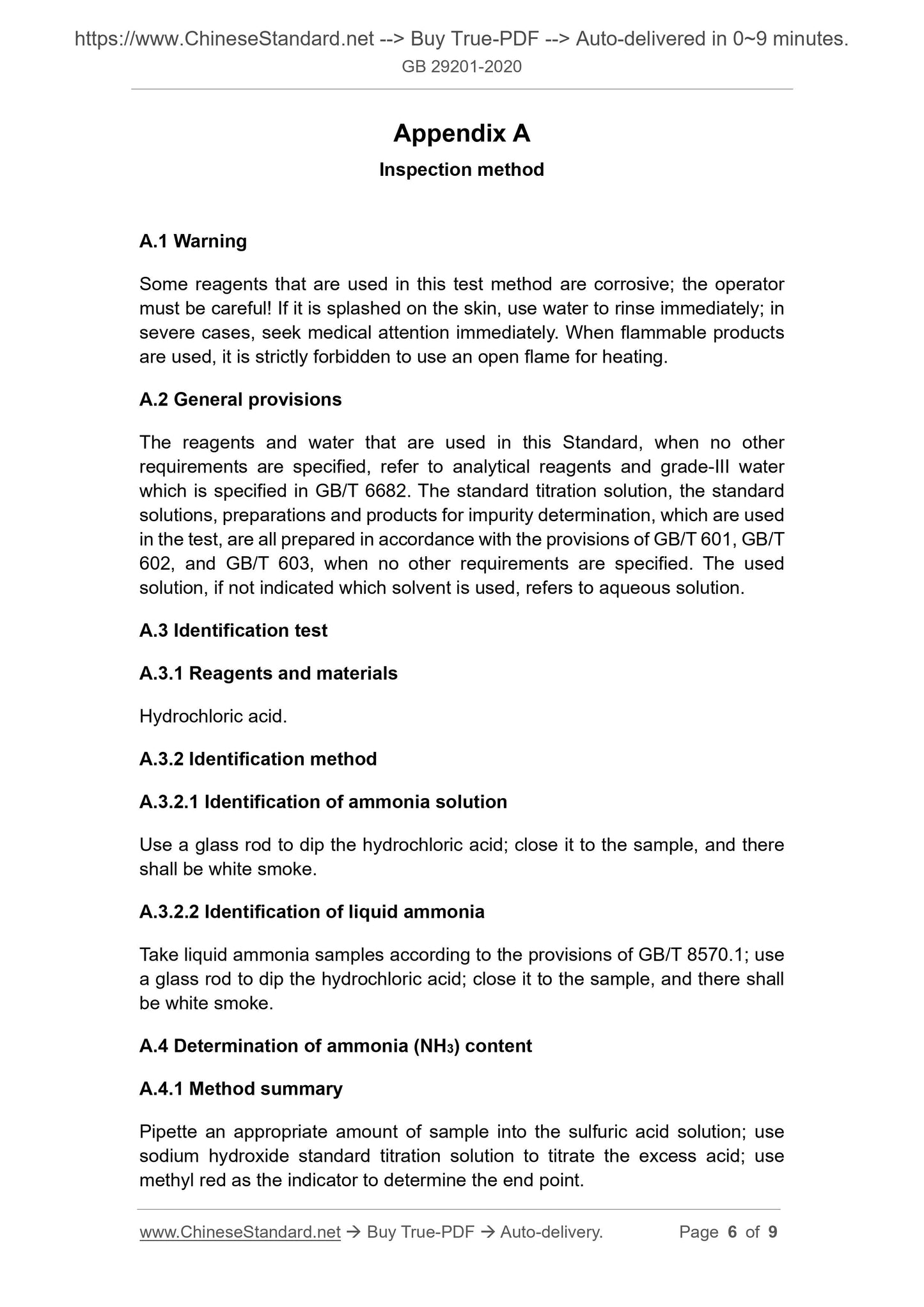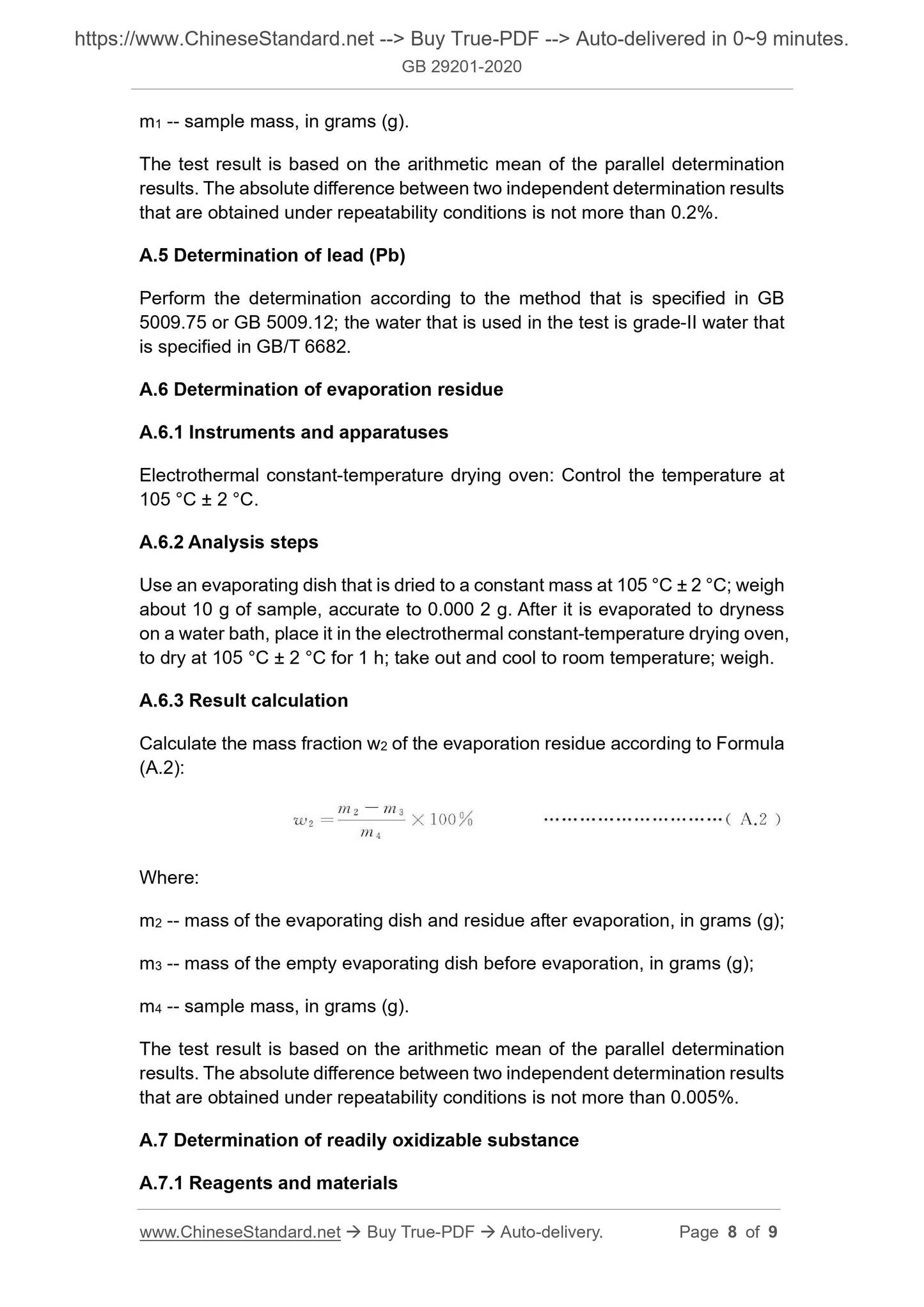1
/
of
6
www.ChineseStandard.us -- Field Test Asia Pte. Ltd.
GB 29201-2020 English PDF
GB 29201-2020 English PDF
Regular price
$95.00
Regular price
Sale price
$95.00
Unit price
/
per
Shipping calculated at checkout.
Couldn't load pickup availability
GB 29201-2020: National food safety standard - Food additive - Ammonia solution and liquid ammonia
Delivery: 9 seconds. Download (and Email) true-PDF + Invoice.Get Quotation: Click GB 29201-2020 (Self-service in 1-minute)
Newer / historical versions: GB 29201-2020
Preview True-PDF
Scope
This Standard applies to the food additive ammonia solution that is producedfrom liquid ammonia, and the food additive liquid ammonia that is produced
after the liquid ammonia is purified.
Basic Data
| Standard ID | GB 29201-2020 (GB29201-2020) |
| Description (Translated English) | National food safety standard - Food additive - Ammonia solution and liquid ammonia |
| Sector / Industry | National Standard |
| Classification of Chinese Standard | X09 |
| Word Count Estimation | 8,898 |
| Date of Issue | 2020-09-11 |
| Date of Implementation | 2021-03-11 |
| Older Standard (superseded by this standard) | GB 29201-2012 |
| Regulation (derived from) | National Health Commission Announcement No. 7 (2020) of the State Administration for Market Regulation |
| Issuing agency(ies) | National Health Commission of the People's Republic of China, State Administration for Market Regulation |
Share
